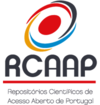Learning objects for teaching Portuguese Language: challenges and solutions during the pandemic
DOI:
https://doi.org/10.21814/h2d.2912Keywords:
learning objects, literacies, multi-literacyAbstract
This paper aims to analyze the pedagogical potential of learning objects (LO) for teaching Portuguese in the current world pandemic scenario. To achieve the proposed objective, we verified the collection of six repositories of learning objects (LOR) in the Brazilian context, classified into three macro categories: public repositories maintained by federal ministries at the international and national levels; public repositories maintained by private initiatives and state departments; and repositories maintained by graduate laboratories. In the data analysis, we verified, through filters and individual analysis, that there are a number of 862 learning objects for teaching and learning Portuguese in the LOR (final years of elementary school). However, the diversity of types of objects that help learning during the pandemic period in question is still a challenge, since most of the identified LO are resources already used traditionally, such as videos and audios that offer little interactivity.
Downloads
References
Bezerra, J. T. G. de M. (2018). Objetos de aprendizagem para o ensino de língua portuguesa em repositórios brasileiros. Dissertação de doutoramento. Universidade Federal da Paraíba.
Cope, B., Kalantzis, M. (2000 [2006]). Designs for social futures. In Cope, B., Kalantzis, M. (Eds.). Multiliteracies: Literacy learning and the design of social futures. Routledge, 203-234.
Kalantzis, M., Cope, B. (2006 [2000]). A Multiliteracies Pedagogy: A Pedagogy Suplemente. In
Kalantzis, M., Cope, B. (Orgs.). Multiliteracies: literacy learning and the design of social futures. Routledge.
Kleiman, Â. (1998). Ação e mudança na sala de aula: uma nova pesquisa sobre letramento e interação. In R. Rojo (Ed.), Alfabetização e letramento: perspectivas lingüísticas. Mercado de Letras.
Lankshear, C., Knobel, M. (2006). New Literacies: everyday practices and classroom learning. Open University Press.
Leffa, V. J. (2012). Ensino de línguas: passado, presente e futuro. Revista de Estudos da Linguagem, 2, 389-411.
Leffa, V. J. (2006). Nem tudo que balança cai: Objetos de aprendizagem no ensino de línguas. Polifonia, 2, 15-45. url: http://www.leffa.pro.br/textos/trabalhos/obj_aprendizagem.pdf.
Polsani, P. R. (2003). Use and Abuse of Reusable Learning Objects. url: https://jodi.ecs.soton.ac.uk/?vol=3&iss=4.
Rojo, R. H. R. (2017). Entre plataformas, ODAS e protótipos: novos multiletramentos em tempos de web 2. The ESPecialist: Descrição, Ensino e Aprendizagem, 1, 1-5. doi: https://doi.org/10.23925/2318-7115.2019v40i2a12.
Rojo, R. H. R., Moura, E. (2012). Multiletramentos na escola. Parábola Editorial.
Soares, M. (2004). Alfabetização e Letramento: caminhos e descaminhos. Pátio – Revista pedagógica.
Soares, M. (1998). Letramento: um tema em três gêneros. Autêntica.
Soares, M. (2002). Novas práticas de leitura e escrita: letramento na cibercultura. Educação e Sociedade, 81, 143-160. doi: http://dx.doi.org/10.1590/S0101-73302002008100008.
Tfouni, L. V. (1998). Adultos não Alfabetizados: o avesso do avesso. Pontes.
Wiley, D. A. (2000). Connecting learning objects to instructional design theory: A definition, a metaphor, and a taxonomy. In Wiley, D. A. (Ed.), The Instructional Use of Learning Objects. url: https://reusability.org/read/chapters/wiley.doc.
Wiley, D. A. (2006). On the inanimate nature of learning objects. url: https://opencontent.org/blog/archives/244.
Downloads
Published
How to Cite
Issue
Section
License
Copyright (c) 2020 H2D|Digital Humanities Journal

This work is licensed under a Creative Commons Attribution 4.0 International License.






